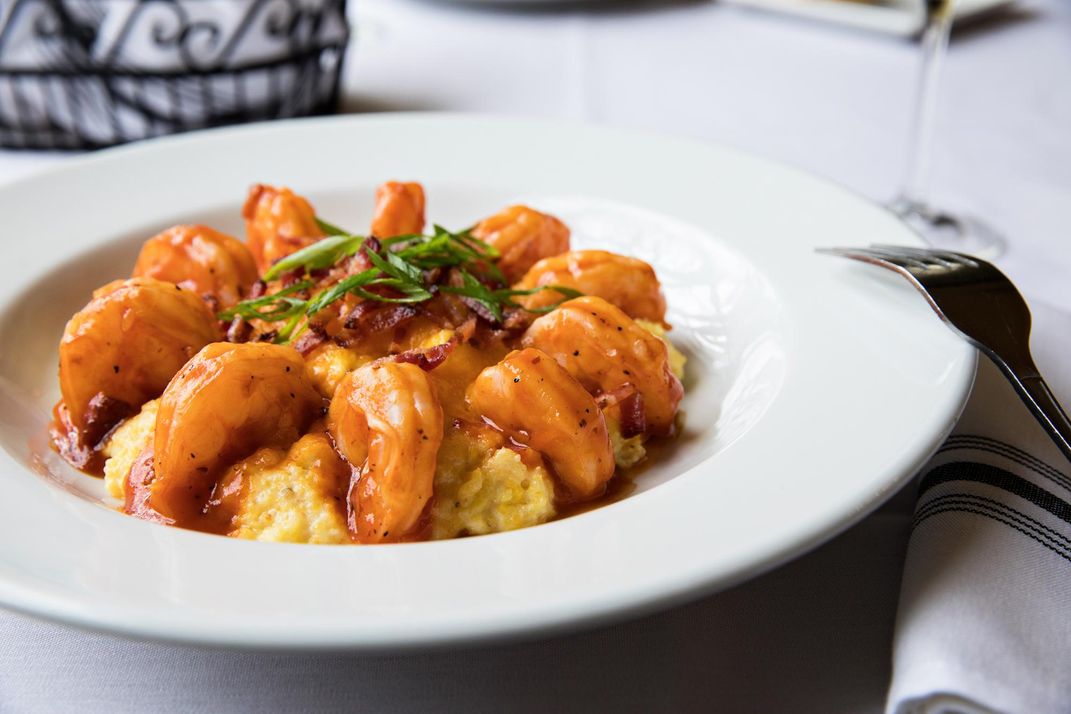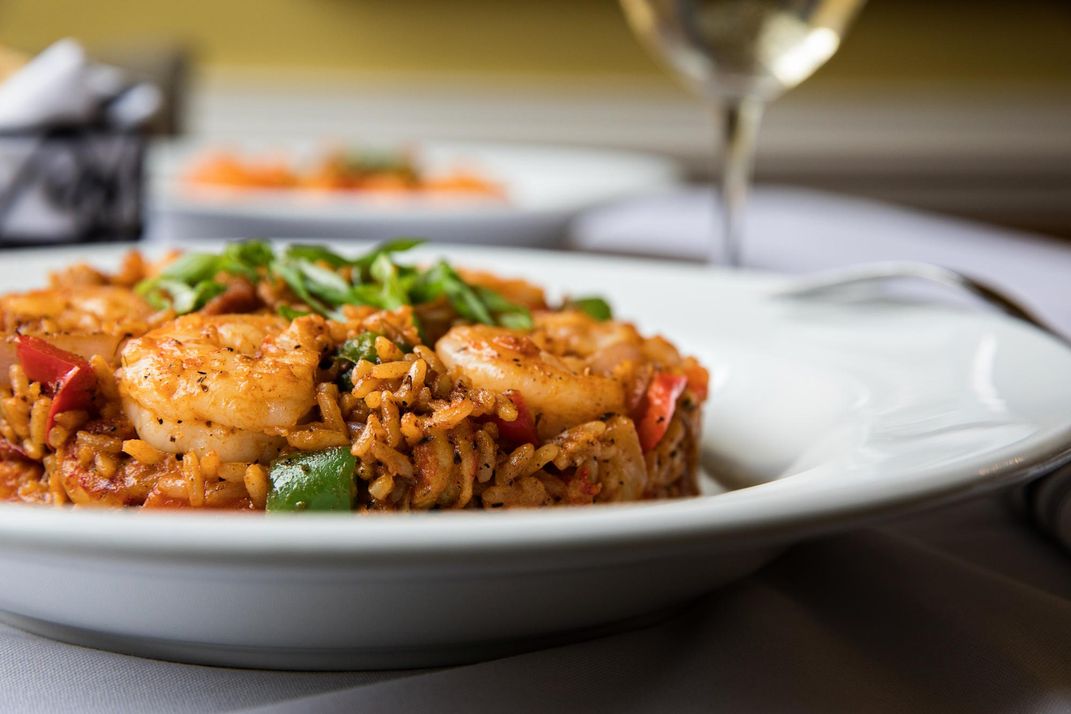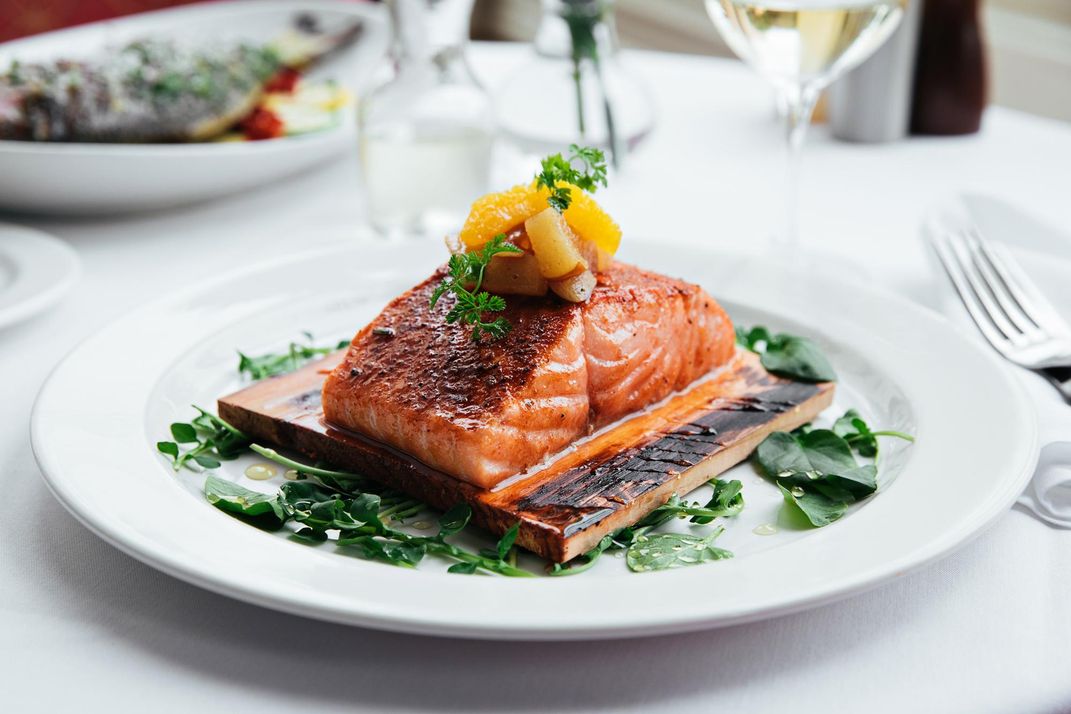Chef Kevin Mitchell’s first culinary instructor knew that from an early age, he was destined to do great things in the kitchen.
“My passion and love for cooking and wanting to become a chef—that came from being in the kitchen with my grandmother at six years old. Now, I have three brothers. So of course, my mom worked a lot, and we spent a lot of time with our grandmother while my mom worked. And I just remember her sitting me down and saying you know, one day, I'm not going to be here, your mother is not going to be here to cook your meals, and so you need to know how to do it. And I really believe, in her heart, she saw something in me that led me to want to become a chef,” he said, reminiscing about long afternoons spent chopping and stirring at his grandmother’s side.

It wasn’t long before the young chef imagined himself cooking in other kitchens: “I remember watching television, and there was a news program about the Culinary Olympics. And I just remember seeing these guys in these crisp white jackets and tall white hats cooking and presenting these elaborate platters of food. And from that point on I was running into the room where my grandmother was and saying, “Grandmother, I know what I want to be when I grow up. I’m going to be a chef.”
After graduating from the Culinary Institute of America, Mitchell worked in five-star kitchens in Atlanta and Detroit before moving to South Carolina in 2008 to become an instructor at the Culinary Institute of Charleston at Trident Technical College, where he explores the contributions of the African-American community to the city’s rich food culture.
Mitchell quickly felt at home in Charleston: “the food scene and the restaurants here, there's really some great chefs. And I think one of the most interesting things for me is just the history. The history of the food, where it comes from, as it relates to the contributions of African-Americans and enslaved people, the African diaspora, all those things really ring true in the city. And I had always been interested in the history of things, and the city really just grabbed me, and it hasn’t let go.”
A Nathalie Dupree Graduate Fellow of the Southern Foodways Alliance, Mitchell has a keen interest in the history of food, a passion he’s channeled into Taste the State: South Carolina’s Signature Foods, Recipes & Their Stories, a book he co-wrote with Professor David S. Shields of the University of South Carolina.
“We've written it like a dictionary, where each entry touches upon with specific ingredients that have ties to South Carolina, and some specific dishes that ring true when people think of South Carolina, and of course specifically of Charleston,” he says of the book. “We've used some traditional recipes that you may have found in the late 1800s, and then I actually wrote contemporary recipes to show the evolution of not only the ingredients, but the recipes—how they were used in the 1800s, to how they might be used today.”
On March 23, 2021 Smithsonian and the Charleston Area Convention & Visitors Bureau hosted Chef Mitchell and Professor Shields for The Flavors of Charleston, where participants had the chance to virtually learn about the historic dishes of Charleston and, with Chef Mitchell’s guidance, try their own hand at making an iconic Charleston recipe.
As if that isn’t mouthwatering enough, Chef Mitchell walked us through some of the dishes that make Charleston such a must-visit destination for anyone who loves to eat and learn—what goes in them, where they come from, and where to find them today.
Shrimp and Grits

Shrimp and grits—a dish found in both restaurants and home kitchens across the South—is one with roots that go deep in South Carolina. “It started from a dish that was like shrimp and gravy, served over rice. But during the Civil War, the production of rice went to a halt, and there needed to be a substitute, and grits became a substitute for rice,” says Mitchell.
And as with many classic dishes, people have strong opinions about what ingredients make shrimp and grits taste just right. “If you ask a purist about shrimp and grits, they're going to tell you that you can only use white corn grits to make shrimp and grits, which of course we know today that is just definitely not the case,” explains Mitchell. “Chefs are using all types of grits. We're using blue corn grits, there's orange grits. There's the jimmy red corn grits that are grown and produced here in South Carolina, and it's named jimmy red because it was first cultivated and produced on James Island here, right outside of the city of Charleston.”
And it’s easy to find a version of shrimp and grits in every part of town, says Mitchell. “You can go to little hole-in-the-wall places that have been around forever, to get shrimp and grits. You can go to Poogan’s Porch, a great Charleston restaurant, or Magnolia’s, which does upscale Lowcountry food, and you're going to have some type of rendition of shrimp and grits. It’s going back to the beauty of food and how it tells a story at each place!”
Red Rice

“No matter where you go in the world,” says Mitchell, “there's always a quintessential one pot rice dish that is relative to that particular place. “So of course if you're going to Spain, you're going to see paella, or if you go to New Orleans you'll see jambalaya. And in Charleston, you’ve got red rice.”
Often served with okra, red rice takes its distinctive color from tomato, a preparation that, like much of traditional Charleston cuisine, has its origins amongst the African diaspora who came to the United States through the transatlantic slave trade. Often found on restaurant menus as a side dish, red rice is a staple at places like Hannibal’s Kitchen, a family owned and operated spot that specializes in regional Charleston cooking.
“Red rice is in a category of what we would call a purlieu, and basically a purlieu are quintessential one pot rice dishes where the essential ingredient is always rice, and then there's additives, whether it's meat, vegetables, even seafood,” says Mitchell. “And there are recipes where you would sauté the rice itself in bacon fat. So, you would cook bacon, render the fat, and then take the bacon out and just use the bacon fat to flavor the rice. And then, of course, you can just eat the bacon on its own.”
There’s really only one constant when it comes to red rice: “the things that remain the same are that rice and whatever that tomato product is. It could be just chopped tomatoes, could be tomato sauce, tomato puree. But it always has to be tomato. And that stems from a traditional dish that comes from Africa called Jollof, which also has rice and some form of tomato product.”
Berbere Spiced Salmon

“For me as a chef,” says Mitchell, “it's important to find interesting and new ways of using ingredients in a way that people may have not necessarily thought of, or know about, but still bringing it to them in a way where they feel comfortable enough using it.”
That’s where berbere, a spice blend often associated with Ethiopian cuisine, comes in.
“It’s a very accessible spice—there are 15 to 20 different things that go into the mix, so it can be very labor intensive to make, but you can also purchase that spice and have it sent directly to your house. Or even some grocery stores carry it, so anyone can find it and incorporate it into the food they make at home,” Mitchell explains. “Dredging it in a piece of salmon and pan searing it...when you think about, it's very similar to just doing a blackened piece of fish. The spice is different, but the process and the technique is still very similar, so you get something that people recognize, but in a new way.”


/https://tf-cmsv2-smithsonianmag-media.s3.amazonaws.com/filer/22/bb/22bb97ec-ebe9-46b4-95a5-787f9549da3f/andrew-cebulka-the_ordinary-2765.jpg)